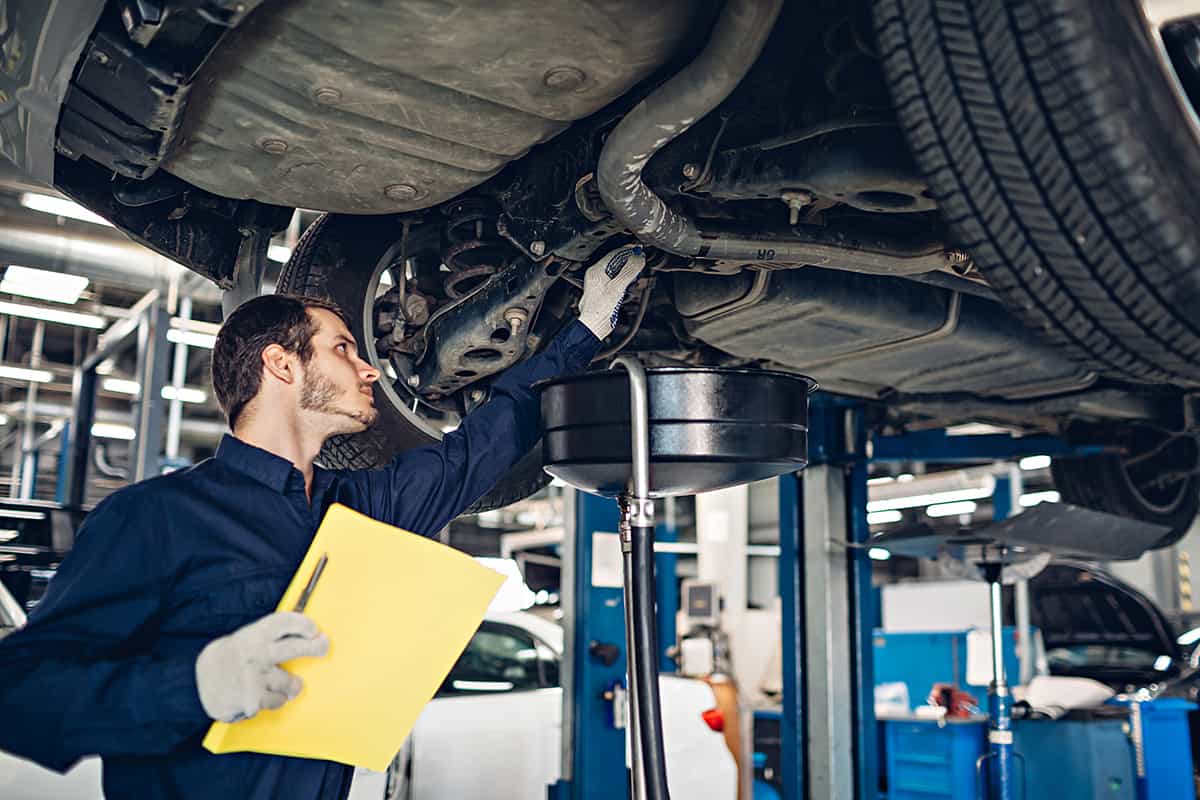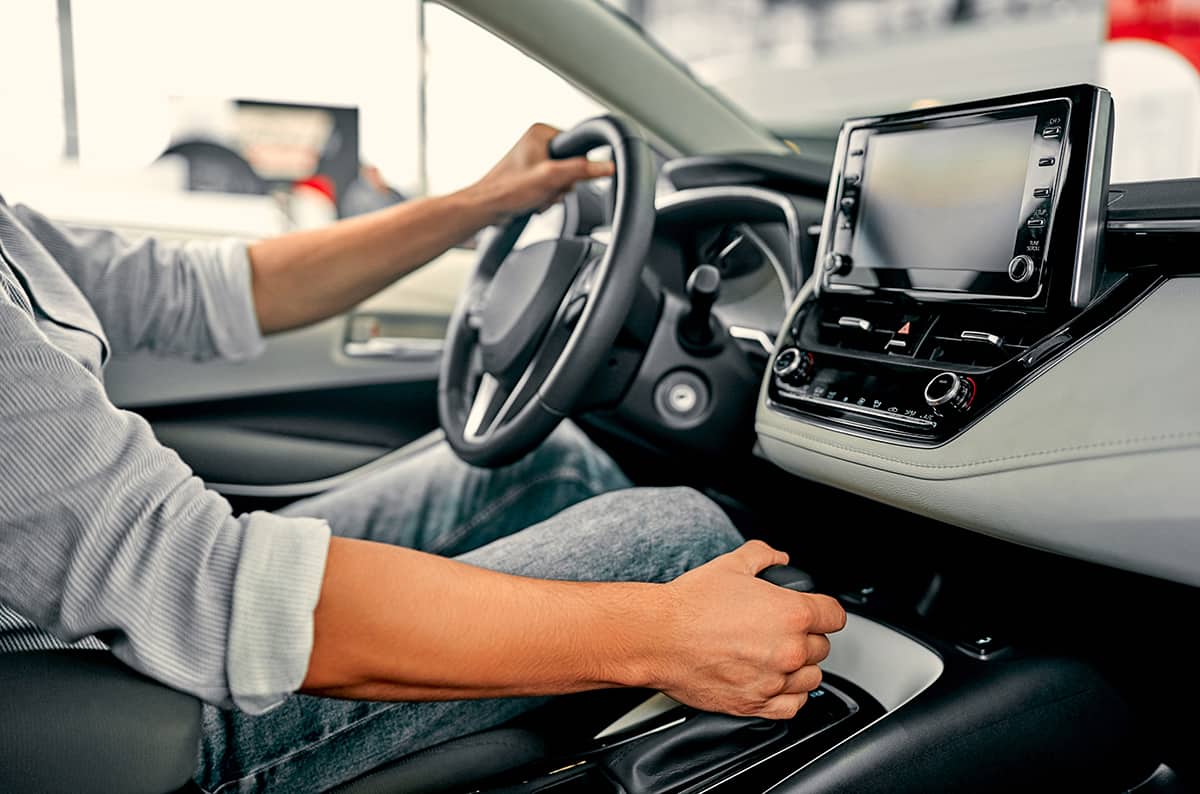Whether it’s to back out from a parking space or move in the opposite direction, the reverse gear is essential. But what if your car won’t go in reverse? This situation can be troublesome and even dangerous in certain conditions, hindering your ability to drive safely and smoothly.
The most common reasons for a car not going in reverse include:
- Low or contaminated transmission fluid
- Faulty transmission linkage
- Malfunctioning clutch system
- Automatic transmission solenoid issues
- Problems with the reverse gear mechanism
This guide will discuss the behind reverse gear problems and the steps to prevent or rectify such issues.
Common Reasons Why Your Car Won’t Go in Reverse

Troubleshooting a car that won’t go in reverse can feel challenging. However, understanding the common culprits can guide you toward the right solution. Let’s explore these causes in detail.
1. Issues with the Transmission Fluid
Transmission fluid plays a pivotal role in the functioning of your vehicle. It lubricates moving parts, cools the transmission, and transmits power from the engine to the drivetrain.
a. Low Transmission Fluid Level
If your car isn’t reversing, it could be due to insufficient transmission fluid. Low fluid levels can hinder the smooth functioning of your car’s transmission system, which includes the reverse gear. Regularly checking and maintaining the appropriate level of transmission fluid is crucial.
b. Contaminated Transmission Fluid
Over time, the transmission fluid can get contaminated with dirt, debris, or metal shavings from the transmission itself. Contaminated fluid can cause wear and tear on the transmission, affecting its operation, including the reverse gear. Changing your transmission fluid as part of routine maintenance can prevent this issue.
2. Problems with the Transmission Linkage
The transmission linkage connects your car’s transmission to the gear shifter. If this linkage gets damaged or misaligned, it can prevent your car from going into reverse. A clear sign of linkage issues is if the vehicle is not responding accurately to the gear shifter’s position.
2. Failure of the Clutch System
In manual transmission vehicles, the clutch system is responsible for engaging and disengaging the gearbox from the engine. If the clutch system fails or malfunctions, it could prevent the car from going into reverse. Common signs of a failing clutch include a burning smell, a noisy clutch, or difficulties in shifting gears.
3. Automatic Transmission Solenoid Issues
In automatic vehicles, the transmission solenoid controls the flow of fluid in the transmission. If the solenoid malfunctions, it can affect the transmission’s operation. Faulty solenoids often cause erratic behavior in gear shifting, including issues with the reverse gear.
4. Problems with the Reverse Gear Mechanism
Sometimes, the issue may lie directly with the reverse gear mechanism itself. The reverse gear might be worn out or damaged due to heavy usage or lack of maintenance. If you hear grinding noises when shifting to reverse, this might indicate a problem with the reverse gear mechanism.
a. Malfunctioning Transmission Valve Body
The transmission valve body, often found in automatic cars, directs transmission fluid to where it’s needed for gear shifting. A malfunctioning valve body can disrupt the flow of fluid, causing issues in shifting gears, including reverse.
b. Reverse Input Clutch Pack Issues
In some automatic vehicles, a specific set of clutches, known as the reverse input clutch pack, engages the reverse gear. If these clutches wear out or fail, it can prevent the vehicle from reversing.
Dealing with a Car that Won’t Go in Reverse
When your car refuses to reverse, it’s not only inconvenient but also a safety concern. To manage such situations effectively, here’s a comprehensive guide on what to do.
Immediate Steps to Take
The moment you realize your car isn’t going into reverse, it’s crucial to avoid forcing the gear shift. This can lead to further damage. Here are immediate steps you should consider:
- Stop the Car: Safely bring your vehicle to a halt. If you’re in the middle of the road, turn on your hazard lights to signal other drivers.
- Check the Transmission Fluid: Refer to your vehicle’s manual to find the transmission fluid dipstick. If the fluid is low or looks dirty, it might be causing the problem.
- Inspect the Area Around Your Car: Sometimes, external factors like a rock or curb could be preventing your car from reversing. A quick inspection might reveal such obstacles.
- Call for Assistance: If the problem persists, consider calling a tow truck or roadside assistance. It’s safer not to drive if your car is not fully functional.
Considering Repair vs Replacement
If your car won’t go in reverse, it’s important to assess whether a repair or a replacement is more cost-effective. Here’s how to approach this decision:
Evaluation of the Issue
First, have a professional mechanic diagnose the problem. The mechanic can inform you about the severity of the issue and the estimated cost of repair. Common issues like low or contaminated transmission fluid and minor linkage problems are generally easier and cheaper to fix. However, problems with the reverse gear mechanism or the transmission valve body could be more expensive to repair.
Cost Analysis
Compare the repair cost with your vehicle’s current value. If the repair cost is close to or more than the value of the car, it might be more economical to consider replacing the vehicle.
Assessing the Vehicle’s Condition
Consider the overall condition of your car. If your vehicle is relatively new with less mileage and in good condition, investing in repairs could be worthwhile. However, if your car is older with significant mileage and other issues, replacement might be a more practical choice.
Potential Future Problems
Consider the likelihood of future problems. If your car has been regularly experiencing issues, this could signal that more problems are on the horizon, which could lean the decision toward replacement.
Tips to Prevent Your Car From Getting Stuck in Reverse

Avoiding a situation where your car won’t go in reverse begins with preventive measures. Here are the top tips to prevent your car from getting stuck in reverse.
1. Regular Transmission Fluid Change
The transmission fluid serves multiple purposes, including lubricating the moving parts, cooling the transmission, and transmitting power from the engine to the drivetrain. However, over time, the fluid can degrade or get contaminated.
Therefore, regular changing of transmission fluid is vital. Most manufacturers recommend changing the fluid every 30,000 to 60,000 miles, but this can vary based on the type of vehicle and how it’s used. Always refer to your vehicle’s manual for the exact maintenance schedule.
2. Timely Repairs and Maintenance
Ignoring minor problems can lead to bigger, more expensive issues. For instance, if you notice that your car is struggling to shift gears, it’s crucial to address this issue promptly. This could be a sign of a bigger underlying problem, such as a failing transmission, which could eventually cause your vehicle to get stuck in reverse.
Regular maintenance checks can help identify potential problems early on. During these checks, a professional mechanic can inspect various components, including the transmission fluid, the clutch system in manual cars, and the solenoids in automatic cars. Regular maintenance can prevent minor issues from escalating into major problems.
Proper Use of Clutch and Gear System
In manual cars, proper use of the clutch and gear system is important. Here are a few tips:
- Don’t ride the clutch. This refers to the practice of keeping the clutch pedal partially depressed, which can lead to premature wear.
- Make sure to fully depress the clutch pedal before changing gears to avoid grinding the gears.
- Don’t use the clutch to hold the car on a hill. This can cause significant wear to the clutch. Instead, use the handbrake.







